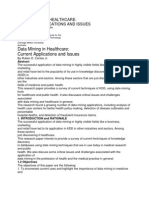- Kaufman's Clinical Neurology For Psychiatrists Pdf
- Kaufman's Clinical Neurology For Psychiatrists 7th Edition Pdf
- Kaufman Clinical Neurology For Psychiatrists
- Kaufman's Clinical Neurology For Psychiatrists
Quiz-summary

0 of 5 questions completed
Questions:
The sixth edition of this popular favorite is ideal for board review, as well as for clinical reference on neurologic illnesses that can cause or mimic psychiatric symptoms. First it reviews anatomic neurology, describes how to approach patients with suspected neurologic disorders and correlates physical signs. Clinical neurology for psychiatrists by Kaufman, David Myland. Publication date 1981 Topics Nervous system, Neurology, Psychiatrists, Nervous system diseases Publisher. For more than 35 years, Kaufman's Clinical Neurology for Psychiatrists has been the only reference to focus on the must-know aspects of neurology for psychiatrists.
- 1
- 2
- 3
- 4
- 5


Kaufman's Clinical Neurology For Psychiatrists Pdf
Information
Course Director: David Myland Kaufman, MD
You have already completed the quiz before. Hence you can not start it again.
You must sign in or sign up to start the quiz.

You have to finish following quiz, to start this quiz:
Results
0 of 5 questions answered correctly

Your time:
Time has elapsed
You have reached 0 of 0 points, (0)
Your result has been entered into leaderboardKaufman's Clinical Neurology For Psychiatrists 7th Edition Pdf
- 1
- 2
- 3
- 4
- 5
Kaufman Clinical Neurology For Psychiatrists
- Answered
- Review
Kaufman's Clinical Neurology For Psychiatrists
1. Question
1 pointsA 70 year-old man, who was previously healthy, sustained a stroke in the left side of this structure. Examination reveals dysarthria, Horner’s syndrome, and ipsilateral facial hypalgesia with crossed body hypalgesia. Which other symptom will most likely be present?
CorrectThe structure that has been sketched is the medulla, which should be identified by the paired scalloped, concave nuclei. The lateral medulla contains the cerebellar outflow tracts and several important brainstem nuclei. He has developed the “lateral medullary syndrome.” As part of that syndrome, injury of the cerebellar outflow tract will cause an ipsilateral intention tremor. More important, lesions of the brainstem generally do not cause aphasia, dementia, or epilepsy – all manifestations of cerebral injury.
IncorrectThe structure that has been sketched is the medulla, which should be identified by the paired scalloped, concave nuclei. The lateral medulla contains the cerebellar outflow tracts and several important brainstem nuclei. He has developed the “lateral medullary syndrome.” As part of that syndrome, injury of the cerebellar outflow tract will cause an ipsilateral intention tremor. More important, lesions of the brainstem generally do not cause aphasia, dementia, or epilepsy – all manifestations of cerebral injury.
- Question 2 of 5
2. Question
1 pointsRegarding genetic diseases that result from excessive trinucleotide repeats, which of the following statements is false?
CorrectPaternal rather than maternal inheritance confers a greater degree of illness. Genetic material in sperm is apparently more unstable than in eggs. Myotonic dystrophy, fragile-X syndrome, certain spinocerebellar ataxias and Huntington’s disease result from expansion of abnormal genes characterized by excessive trinucleotide repeats.
IncorrectPaternal rather than maternal inheritance confers a greater degree of illness. Genetic material in sperm is apparently more unstable than in eggs. Myotonic dystrophy, fragile-X syndrome, certain spinocerebellar ataxias and Huntington’s disease result from expansion of abnormal genes characterized by excessive trinucleotide repeats.
- Question 3 of 5
3. Question
1 pointsA 4 year-old mentally retarded boy eats compulsively and voraciously. He eventually develops extreme obesity. Other than poor coordination, his neurologic examination shows no particular abnormality. Also, his routine blood tests, an MRI of the brain, and endocrine tests are normal. His father has mental impairment and obesity, but not to the same extent. At this point, which of the following illnesses is indicated?
CorrectWhile all the choices might be considered, the familial incidence, lack of neurologic abnormalities, and normal MRI and endocrine studies eliminate almost all of them. The most likely condition is the Prader-Willi syndrome, which results from abnormal genetic material that is usually inherited from the father.
IncorrectWhile all the choices might be considered, the familial incidence, lack of neurologic abnormalities, and normal MRI and endocrine studies eliminate almost all of them. The most likely condition is the Prader-Willi syndrome, which results from abnormal genetic material that is usually inherited from the father.
- Question 4 of 5
4. Question
1 pointsA 72 year-old man developed dementia. Then he became reticent, but when he spoke his speech was aggressive and contained many sexual innuendos. He was ambulatory and had no focal physical neurologic signs. He had marked frontal release signs and tended to put inedible objects into his mouth. Visuo-spatial relationships are preserved. Which of the following is the most likely diagnosis?
CorrectHe has uninhibited behavior, often with a sexual flavor, and other signs of frontal lobe dysfunction. Notably, he has no lateralized signs, but preserved visuo-spatial relationships. This is a case of fronto-temporal dementia, which typically has aspects of the human Kluver-Bucy syndrome. Pick’s disease is probably the commonest cause of this variety of dementia.
IncorrectHe has uninhibited behavior, often with a sexual flavor, and other signs of frontal lobe dysfunction. Notably, he has no lateralized signs, but preserved visuo-spatial relationships. This is a case of fronto-temporal dementia, which typically has aspects of the human Kluver-Bucy syndrome. Pick’s disease is probably the commonest cause of this variety of dementia.
- Question 5 of 5
5. Question
1 pointsWhich of the following visual fields is usually found with nonfluent aphasia?
CorrectNonfluent aphasia, which usually results from a left cerebral hemisphere lesion, is associated with a right homonymous hemianopsia. Remember that visual fields are portrayed from the patient’s perspective.
IncorrectNonfluent aphasia, which usually results from a left cerebral hemisphere lesion, is associated with a right homonymous hemianopsia. Remember that visual fields are portrayed from the patient’s perspective.
Comments are closed.